body (of letter)
Hello, this is Genta Hakuna ( @pokocha_kun ).
I have created a 2-cost reroll simulator, and I would like to contribute an article to TFTimes about the simulator and the optimal reroll strategy for the reroll configuration that can be seen from the results.
The simulator is shown below.
In conclusion
Target unit held by opponent and myself in equal numbers -> Slow reroll
I have 1 more than opponent -> Reroll to 20g
I have 2 more than opponent -> All-in
I have 1 more than opponent -> Withdraw
This strategy seems to be the correct one.
We will explain each pattern by looking at the simulation results.
The target unit is held by the opponent and yourself in equal numbers.
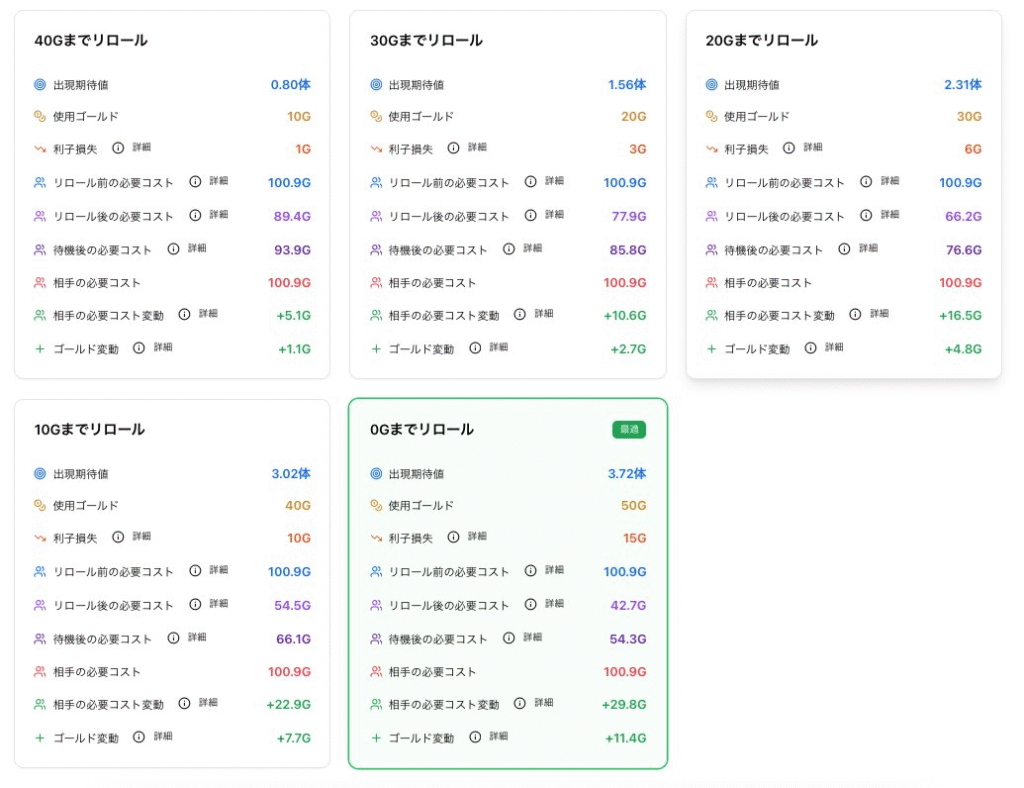
Here are the results when the number of gold held by each other in the simulator is 3 and the number of gold held by each other is 50.
It is difficult to understand the items, but each of them is shown,
- Interest loss : amount of interest lost if 10g is earned in one round
- Required cost after reroll : Remaining reroll gold required to collect 9 units after rerolling to that gold. This value does not take into account the opponent’s reroll, so the actual gold required will be more than this.
- Cost required after waiting : Cost required for a reroll if the reroll is initiated after the interest has recovered to 50g. This is also based on the assumption that 10g is acquired per round and the opponent is assumed to reroll 5 times per round.
- Change in opponent’s required cost : If your reroll compresses the pool, how much your opponent’s reroll cost will increase
- Gold variation : opponent’s required cost variation – own required cost variation.
Your change = (cost required after waiting + gold used + interest loss) – cost required before reroll
It is not easy to understand, but it is an index of how much the gold required by your opponent and yourself changes when you reroll.
For the sake of convenience, the highest value is considered the optimal solution, but TFT is not a timer’s game, and in reality, the action is not considered optimal unless the value is more than 40g.
In other words, the result can be interpreted that if you reroll until you are at 0g, your opponent needs an extra 30g to reroll and you lose 15g of interest, which is a gain in a timed game.
However, in reality, it is not a timer, so a slow reroll is probably optimal.
Two or more than the opponent.
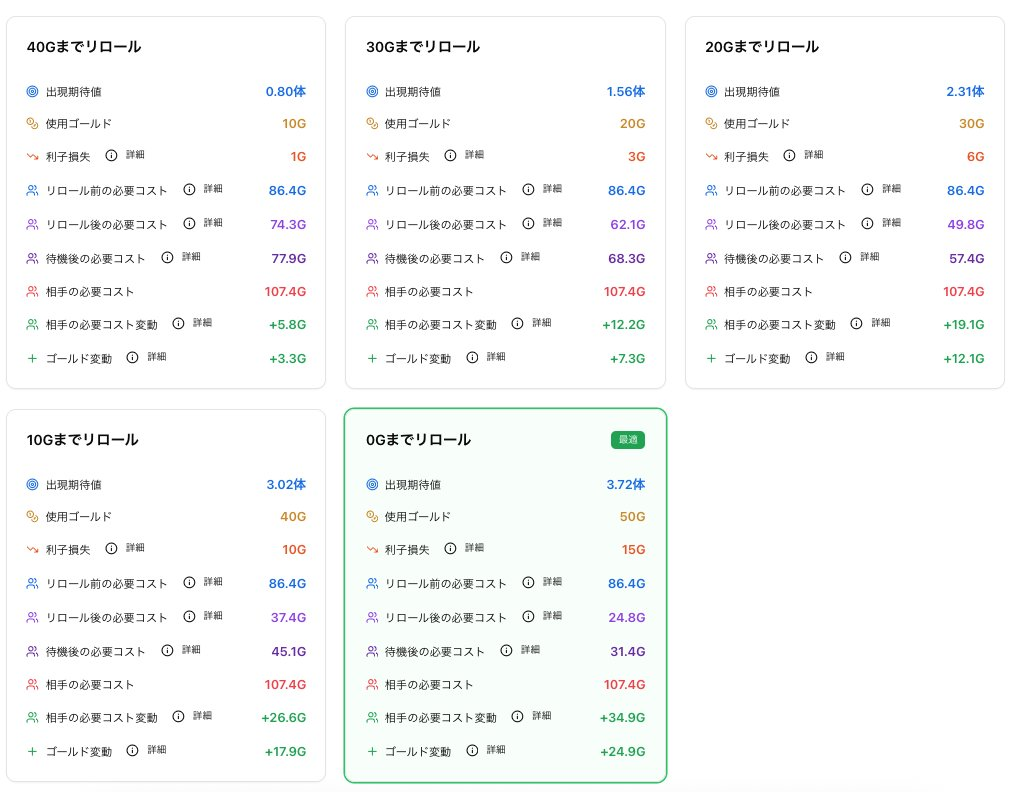
The simulator shows the results when you are 4, your opponent is 3, and your gold is 50.
The optimal solution is to reroll to 0g, but in reality it is more realistic to reroll to 30~20g.
If you reroll to 20g, you lose 6g of interest and your opponent gains 20g of gold.
On the other hand, if you reroll slowly and your opponent rerolls up to 20g, you will have a hard time.
The result of this calculation shows that if you reroll to 10g, the gold fluctuation is 18g, which looks like a good deal, but in reality, the loss of interest is 4g more, so I don’t think you need to go that far.
What this result suggests is important,
Mathematically, when there are competitors, 2 and 3 stars are not the only divergence points, but even if 3 stars are far away, it is advantageous to split the interest and collect the frames faster than the opponent
This is what we can see.
The opponent has more than one more than you.
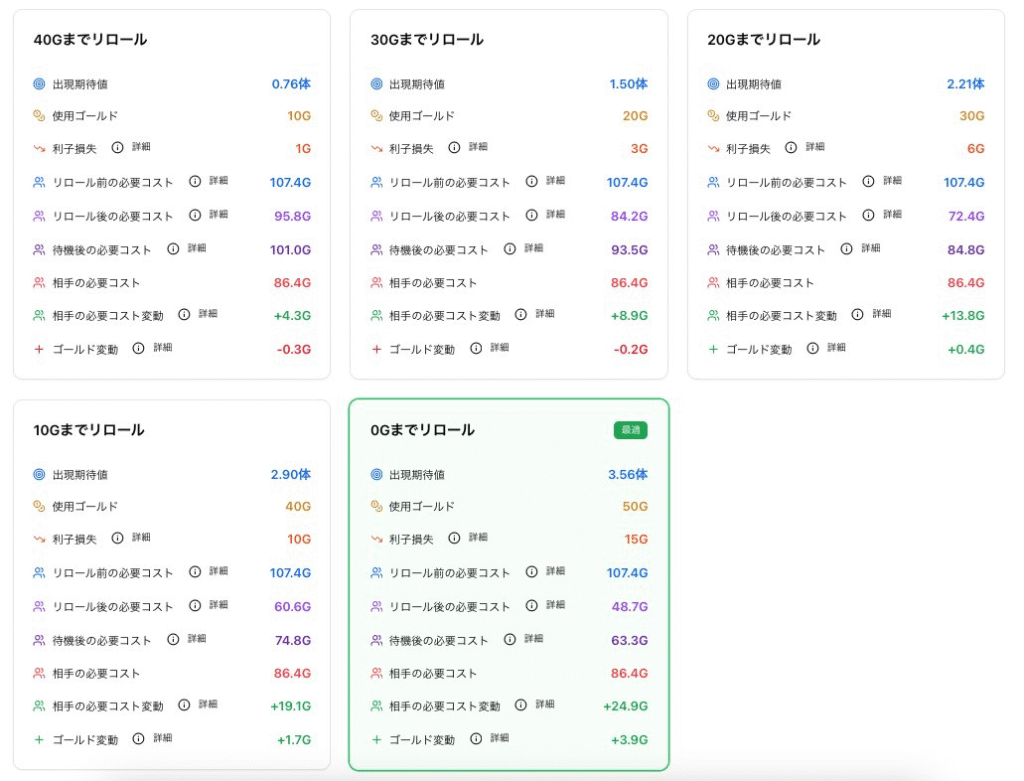
Here is the result of the simulator with 3 for you, 4 for your opponent, and 50 gold in your possession.
This one has 21g more gold to reroll than the opponent at the start. (Myself 107, Opponent 86)
Realistically speaking, with 21, it is possible to change the configuration, and even if you spent 21g and went into that configuration, it would be tough to exceed 4.5 in the average ranking.
Also, if you are two cards ahead of your opponent, it is even more disastrous and
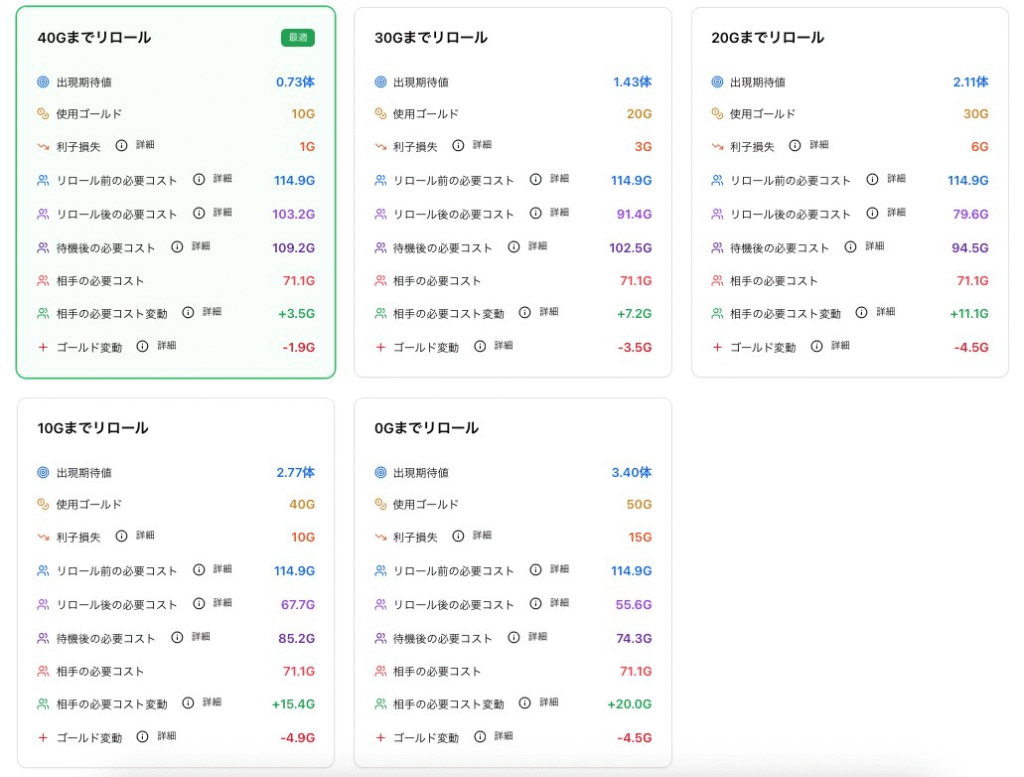
This one has 43g more gold needed for reroll than the opponent at the start. (114 for me, 71 for my opponent)
You can see how tough it is when you look at the numbers.
You have no choice but to withdraw.
About the Simulator
It was made in about 5 hours, so there are still quite a few rough edges, but the simulator will probably never actually be used during a match, and I think it is practical enough to look at some data like this and decide on a course of action.
If you look at the numbers, you can see that rerolling when there is competition is quite tough because the cost of rerolling is 1.5-2 times the cost of rerolling in the first place.
I think the only time you can leave a good ranking is when you have 2 more cards than your opponent as a condition.
If there is a response to the article, I will create and publish a 1 or 3 cost version or a version with a few more improvements.
I would also like to create a version with two target units since the current meta is dominated by GP and Cobco rerolls.
I would be very encouraged if you could give me your feedback comments.

It’s really helpful (helpful) to provide articles of this kind of verification type.


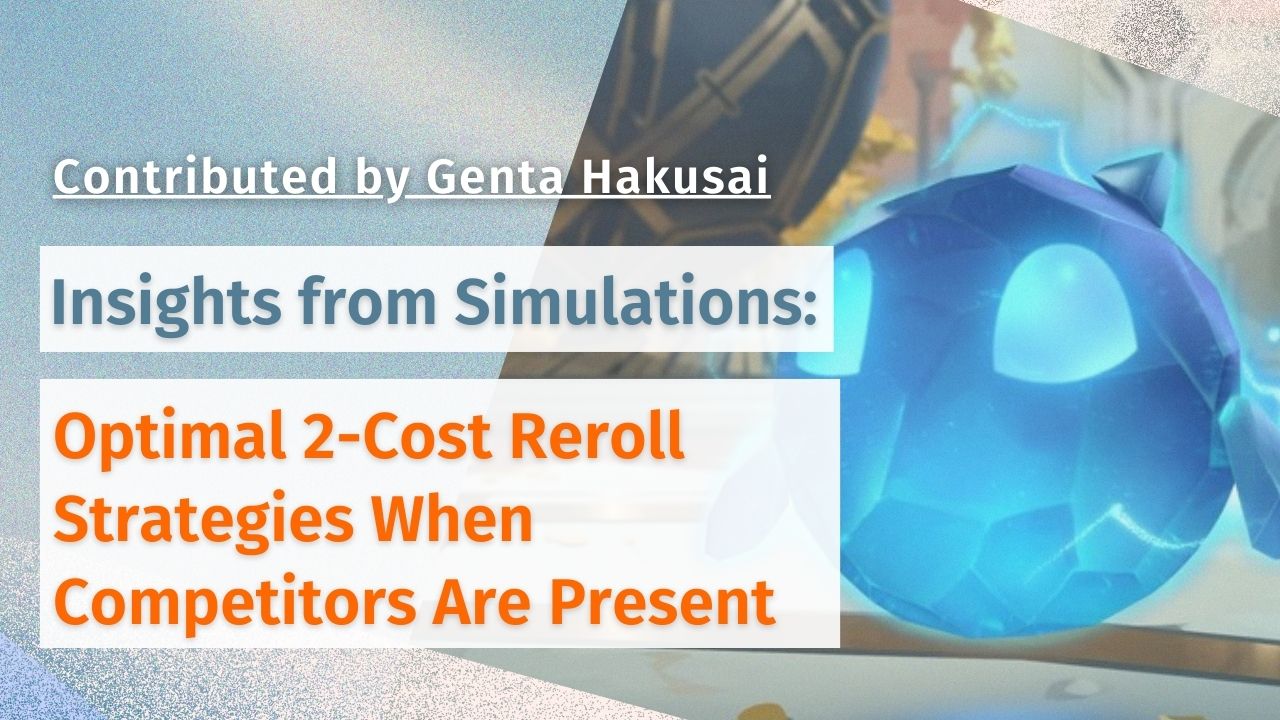


コメント